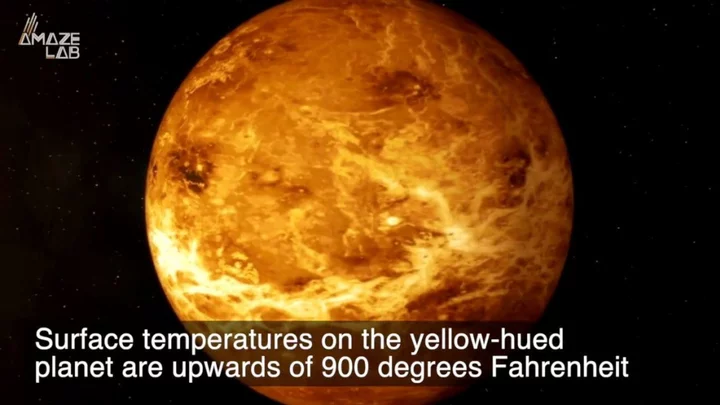
Solar panel efficiency to increase 50% with first production of ‘miracle’ tandem cells
A South Korean firm has announced the world’s first production line for perovskite-silicon tandem solar cells, which promise an increase in efficiency of between 50-75 per cent compared to standard solar panels. The commercialisation of solar cells that use perovskite follows years of breakthroughs with the mineral, which has been hailed as a ‘miracle material’ for its potential to transform various industries, including renewable energy. Seoul-based Qcells said it will invest $100 million to roll out the next-generation solar cell technoloy, which until now has been limited to lab tests and academic research. The investment will fund a pilot production line at a factory in Jincheon, which is projected to be operational by late next year. “This investment in Jincheon will mark an important step in securing technological leadership,” said Qcells CEO Justin Lee. “With a global R&D network spanning from Korea, Germany and the US, Qcells will ramp up its efforts to produce high-efficiency advanced tandem cells.” Tandem solar cells are able to improve the efficiency of standard solar panels by splitting the light spectrum and optimising the harvesting of energy from each section into electricity. The current world record for solar cell efficiency is 32.5 per cent – meaning nearly a third of solar radiation is converted into eletrical energy – which was achieved with a perovskite-silicon tandem cell in December. By comparison, traditional silicon-based solar cells are currently only capable of reaching around 22 per cent efficiency. Qcells has so far succeeded in developing a tandem perovskite solar cell with a 29.3 per cent efficiency, which was achieved earlier this year in collaboration with German research centre Helmholtz-Zentrum Berlin. The results were verified by the US Department of Energy’s National Renewable Energy Laboratory (NREL) Read More Microsoft makes world first nuclear fusion energy deal Quantum computer discovers bizarre particle that remembers its past Nasa says Jeff Bezos will build moon lander to take astronauts to the Moon ChatGPT app launches for iPhone users amid scam frenzy Google to delete Gmail and Photos accounts in huge purge
2023-05-20 01:27

Scientists find that AI can read thoughts from monitoring your brain activity
Scientists have revealed they had found a way to combine the technology of brain scans and artificial intelligence to transcribe “the gist” of people’s thoughts. Alex Huth, an assistant professor of neuroscience and computing science at the University of Texas at Austin, and a co-author on the new study published in Nature Neuroscience, said that ‘this is a real leap forward.’ The study was led by Huth and Jerry Tang, a doctoral student in computer science. The main development from this study is that it’s non-invasive. This means that subjects do not require surgical implants. Instead, brain activity is measured using a functional magnetic resonance imaging (fMRI) scanner. Sign up to our free Indy100 weekly newsletter In the study, individuals listened to hours of podcasts in the scanner. Then, given the participant’s consent to have their thoughts decoded, they listened to a new story and the machine-generated corresponding texts from brain activity. It’s not a word-for-word transcript. For example, when an individual heard the phrase ‘I don’t have my driver’s licence yet’, the model decoded the individual’s thoughts to read as ‘she has not even started to learn to drive yet.’ Even when participants thought up their own stories, the machine was able to decode their thoughts still. Tang acknowledged that the advancements made in the study had the potential for negative aftermath. Tang said, ‘we take very seriously the concerns that it could be used for bad purposes and have worked to avoid that.’ They ran tests that highlighted that unless the machine had been trained on an individual’s particular brain activity, it could not decode its thoughts. An individual had to allow for the machine to train their brain activity over a long period of time inside a fMRI scanner for it to work. Researchers also found that it was easy to ‘sabotage’ the machine. Three participants were told to tell a different story in their mind, or count by seven, while listening to one of the podcasts. The study highlights even more development with artificial intelligence, after the popularity of OpenAI’s Chat GPT has sparked debate around the potential of AI. Have your say in our news democracy. Click the upvote icon at the top of the page to help raise this article through the indy100 rankings.
2023-05-20 00:27

Nasa discover new planet that is entirely covered with volcanoes
Nasa scientists have found a planet they believe is covered by active volcanoes. In a study published in the journal Nature, scientists said they found the planet, which is the size of Earth about 90 light-years from Earth in the Crater constellation. They called it LP 791-18 d and one part is constantly scorched by sunlight, while the other is always in darkness. “The day side would probably be too hot for liquid water to exist on the surface. But the amount of volcanic activity we suspect occurs all over the planet could sustain an atmosphere, which may allow water to condense on the night side,” Björn Benneke, one of the astronomers who studied the planet, told NASA’s Jet Propulsion Laboratory. Sign up to our free Indy100 weekly newsletter The LP 791-18 system contains at least two other planets, called LP 791-18 b and c. The latter is two-and-a-half times larger than Earth and more than seven times its mass. It also affects the orbit of LP 791-18 d, making it travel along an elliptical path around the system’s sun. That path means LP 791-18 d is deformed every time it completes an orbit. “These deformations can create enough internal friction to substantially heat the planet’s interior and produce volcanic activity at its surface,” according to NASA. “A big question in astrobiology, the field that broadly studies the origins of life on Earth and beyond, is if tectonic or volcanic activity is necessary for life,” study co-author Jessie Christiansen said. “In addition to potentially providing an atmosphere, these processes could churn up materials that would otherwise sink down and get trapped in the crust, including those we think are important for life, like carbon.” Have your say in our news democracy. Click the upvote icon at the top of the page to help raise this article through the indy100 rankings.
2023-05-19 19:15

Scientists invent electronic skin that gives amputees sense of touch
Scientists have invented a type of electronic skin that can “talk directly to the brain”, allowing amputees to feel a human-like sense of touch through prosthetic limbs. The ground-breaking artificial skin is embedded with sensors for temperature, pressure and strain, which are converted into electrical signals – similar to how nerve impulses communicate with the brain. The wearable electronic circuit, known as a monolithic e-skin, was developed by a team from Stanford University, who detailed their breakthrough in a study published in the journal Science. Stanford University’s Zhenan Bao, who was a senior author of the study, told The Independent that the next-generation technology could also be used to feel objects and sensations while controlling a robotic limb remotely. “We’ve been working on a monolithic e-skin for some time,” Professor Bao said. “The hurdle was not so much finding mechanisms to mimic the remarkable sensory abilities of human touch, but bringing them together using only skin-like materials.” Weichen Wang, a doctoral candidate in Bao’s lab, added: “Much of that challenge came down to advancing the skin-like electronic materials so that they can be incorporated into integrated circuits with sufficient complexity to generate nerve-like pulse trains and low enough operating voltage to be used safely on the human body.” A prototype of the e-skin, which is about the thickness of a piece of paper, is the first to combine all the desired electrical and mechanical features of human skin in a soft and durable form. The team now plans to increase the scalability of the technology and develop an implantable chip to allow wireless communication through the body’s peripheral nerve. Other recent research into electronic skin has focussed on robotics, aiming to provide robots with sensory feedback and physical self-awareness. A team from the University of Edinburgh unveiled a device earlier this year that offered perceptive senses “similar to those of people and animals”. A separate study in 2023 from engineers at the California Institute of Technology (Caltech) outlined a type of artificial skin capable of sensing toxic chemicals, which could allow robots to detect anything from pollution in rivers to nerve agents and biohazards. Read More AI robots figure out how to play football in shambolic footage Scientists develop device that allows amputees to feel warmth in phantom hand Charting the controversial rise of the world’s most popular app Montana TikTok ban ‘unconstitutional’ and ‘impossible to enforce’
2023-05-19 02:26

Scientists develop device that allows amputees to feel warmth in phantom hand
Scientists have developed a device that allows amputees to feel warmth in their phantom hand. MiniTouch consists of a small sensor placed on an amputee’s prosthetic finger and electrodes that mimic sensations on the residual arm. The electrodes on the amputated arm are able to relay the temperature of the object being touched by the finger sensor, giving “the illusion that we are cooling down, or warming up, missing fingers”. The researchers said their findings, published in the journal Science, could allow amputees to have temperature-sensing technology built into their prosthetic limbs, without the need for invasive technology. The team said they developed MiniTouch after unexpectedly discovering that amputees somehow are able to feel temperatures in their missing hand. Dr Solaiman Shokur, a neuroengineer and scientist at Ecole Polytechnique Federale de Lausanne (EPFL), Switzerland, said: “We discovered a new mechanism that we call the thermal phantom sensation.” In an able-bodied person, if something hot or cold is placed on the forearm, that person will feel the object’s temperature directly on their forearm. But in amputees, that temperature sensation on the residual arm may be felt in the phantom, missing hand, the researchers said. Dr Shokur said: “(During the tests) we were expecting for them to tell us, with eyes closed, where they felt it (temperature sensations) on the stump, and if it was hot or cold. “Instead, they pointed into a drawing of a hand that they had in front of them and they told us ‘I feel it there’. “We asked them several times ‘What do you mean by that, I feel it there?’ and then they clarified that they felt it into their phantom missing hand. “So this discovery was crucial for us to develop a neurotechnology that could integrate the prosthetic hand of patients.” The team said they were able to successfully test their bionic technology in 17 out of 27 patients. MiniTouch uses information about an object’s heat conducting properties to determine how hot or cold it is. The scientists said they found that small areas of skin on the amputated arm are able to project temperature sensations to specific parts of the phantom hand, like the thumb, or the tip of an index finger. They also discovered that these temperature sensations between the residual arm and the projected phantom one is unique to each patient. Fabrizio Fidati, an amputee from Italy, who took part in the study, said: “Warmth is the most beautiful feeling there is… like when we need warmth, we use a hot water bottle.” He added: “So far, prostheses have mainly been designed to have simple everyday movements, to help you in your everyday life. “But integrations of sensations of hot and cold, in my opinion, also serves to improve social interactions. “When shaking hands with people, warmth is… fundamental.” Study participant Francesca Rossi, also from Italy, added: “Temperature feedback is a nice sensation because you feel the limb, the phantom limb, entirely. “It does not feel phantom anymore because your limb is back.” Read More Charity boss speaks out over ‘traumatic’ encounter with royal aide Ukraine war’s heaviest fight rages in east - follow live Self-driving cars will cause ‘moral panic’ – transport minister Cryptocurrency trading should be regulated as gambling, says treasury committee WhatsApp offers new password protected feature to hide messages
2023-05-19 02:18

These Apps Are Helping Families Save Big on Grocery and Restaurant Bills
Discounted food apps like Too Good To Go and Flashfood can help you reduce food waste and find great deals on grocery staples like eggs, bread, and more.
2023-05-18 22:20

Scientists warn that New York City is starting to sink
When most people picture New York City, it’s likely that its many skyscrapers are one of the first things that come to mind, but now, scientists are concerned that the city is sinking under their weight. It comes after the findings of a new study observed subsidence of the footprint after the geology beneath the city was modelled and compared to satellite data. The study was conducted by geologist Tom Parsons from the United States Geological Survey and colleagues from The University of Rhode Island, who found that, under the weight of its multiple skyscrapers, NYC is sinking by one to two millimetres per year. Subsistence can occur due to shifting soft sediments and the sheer weight of the load on the ground pushing it down. The study calculated that there are over 1 million buildings in NYC with a cumulative mass of approximately 764,000,000,000 kilograms. Sign up to our free Indy100 weekly newsletter While a few millimetres of subsidence per year might sound like nothing, some parts of the city are subsiding faster – with calculations putting a sample site in lower Manhattan at 294 millimetres. To calculate the rates of subsidence, experts compared their modelling with satellite data that measured the land surface height. The scientists warn that thought must be given to low-lying cities such as NYC, which is home to 8 million people, particularly given rising sea levels and increasing flood risks. Parsons explained: “The point of the paper is to raise awareness that every additional high-rise building constructed at coastal, river, or lakefront settings could contribute to future flood risk.” Have your say in our news democracy. Click the upvote icon at the top of the page to help raise this article through the indy100 rankings.
2023-05-18 16:59

Hippocratic AI raises $50 million seed funding to build models for healthcare
By Krystal Hu Hippocratic AI, a startup building artificial intelligence models for the healthcare industry, has raised $50
2023-05-16 21:56

WHO warns against bias, misinformation in using AI in healthcare
The World Health Organization called for caution on Tuesday in using artificial intelligence for public healthcare, saying data
2023-05-16 17:59

Philips Says Recalled Devices Unlikely to Harm Patient Health
Royal Philips NV said new tests on its recalled sleep apnea products showed the vast majority of the
2023-05-16 14:54

Flooding the Sahara desert proposed as radical climate change solution
It might sound more like the kind of idle daydream billionaires like Elon Musk would have, but could flooding the Sahara actually be the best way of tackling climate change in the future? The idea of creating a new “sea” in Africa is being discussed, and it’s not the first time that the notion of a great oasis in the Sahara has been discussed among the scientific community. As the ongoing climate crisis continues to worsen, the notion of flooding vast areas of the desert is being returned to once again [via IFL Science]. A new “sea” was first proposed following the study of the Messinian salinity crisis – which saw a dried-out area of the Mediterranean rejuvenated by the Zanclean flood, reconnecting the Mediterranean Sea to the Atlantic Ocean around 5.33 million years ago. Sign up to our free Indy100 weekly newsletter Given how the Mediterranean was transformed by the flood, the idea of flooding the Sahara to achieve similar results has been thrown around in the scientific community as far back as 1877, the Scottish engineer Donald McKenzie suggested flooding the El Djouf basin in Western Africa. The idea is now returning to popularity as the world looks for solutions to the climate crisis. One proposal centres on the Middle East’s Dead Sea and flooding the area using water from the Red Sea to the Dead Sea Depression. A vast sea in Africa could represent a hugely innovative step towards tackling climate change and fostering a new hub of life – but even the people suggesting work such a project acknowledge just how expensive and dangerous it is. Even Y Combinator is a US startup accelerator who has described “desert flooding” as “risky, unproven, even unlikely to work”. Only time will tell whether the notion of a new sea in the Sahara coud ever work, or whether it’ll remain the stuff of dreams. Have your say in our news democracy. Click the upvote icon at the top of the page to help raise this article through the indy100 rankings.
2023-05-16 14:19

Don't miss this week: Jack Harlow on screen, Kesha, Anna Nicole Smith doc and Scott brothers on HGTV
This week’s new entertainment releases include albums from Kesha and Dave Matthews Band, while rapper Jack Harlow stars in a remake of “White Men Can’t Jump” and wilderness expert Bear Grylls tests contestants on their survival skills, physicality and gross-out tolerance with "I Survived Bear Grylls.”
2023-05-15 23:26
